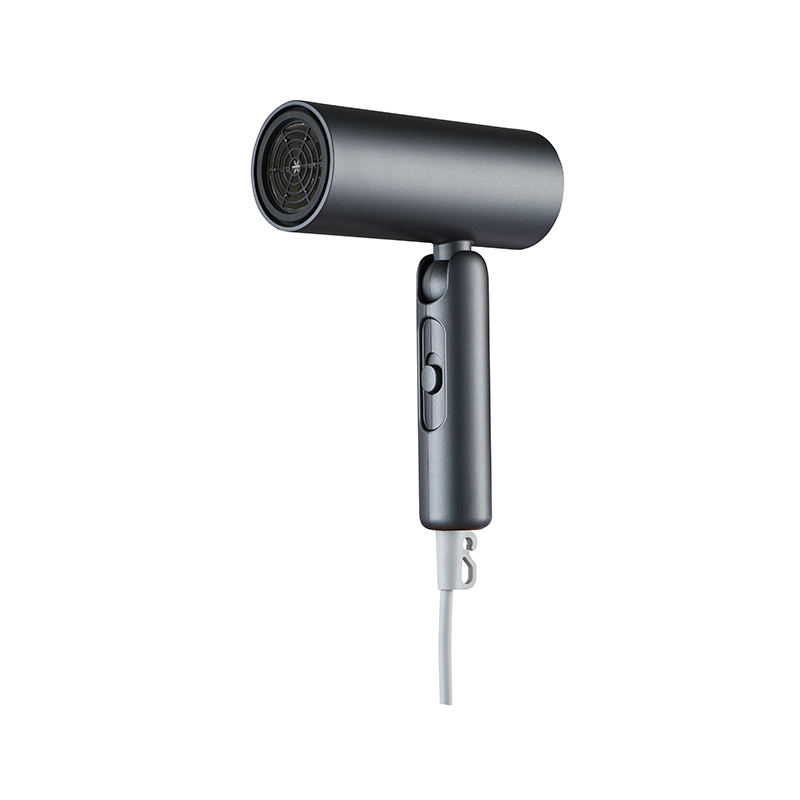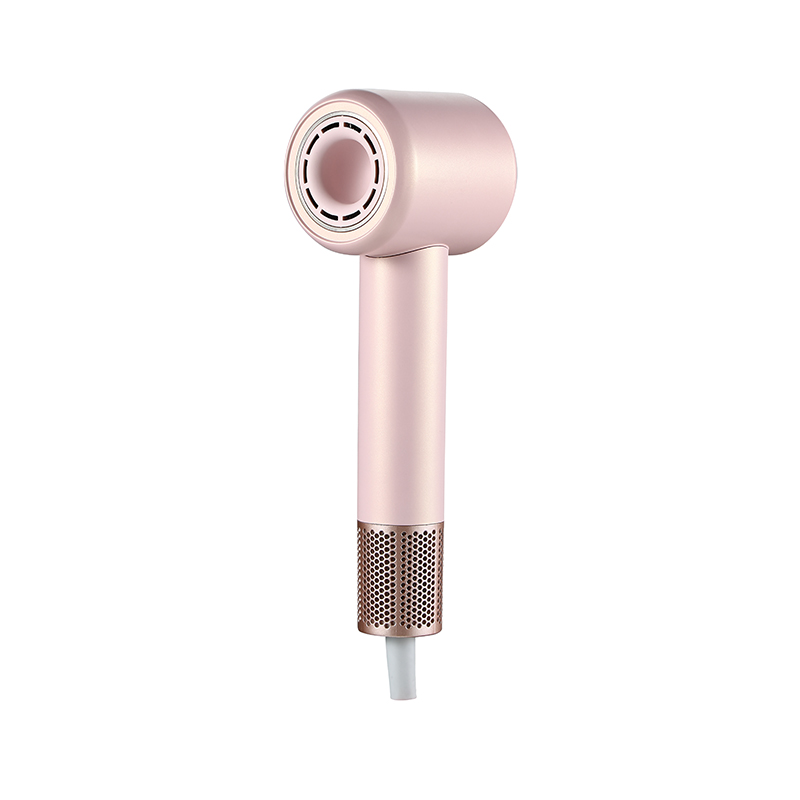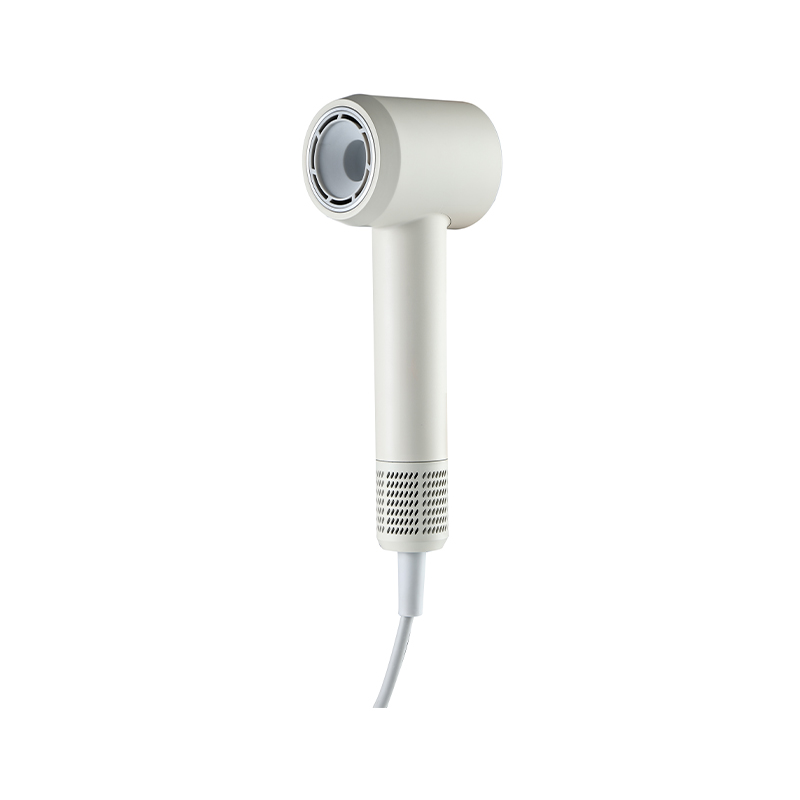How does the noise reduction structure of a high-speed hair dryer reduce high-frequency vibration of the motor?
Release Time : 2025-10-30
High-speed hair dryers employ a multi-dimensional, collaborative technology structure to effectively reduce high-frequency motor vibration. The core of this structure lies in building a complete vibration reduction system across three levels: vibration source control, propagation path blocking, and end-effector absorption. This allows for low-noise operation while maintaining strong airflow.
Motor design is the primary step in suppressing high-frequency vibration. High-speed hair dryers generally use brushless DC motors, which drive the rotor rotation via electromagnetic induction, eliminating the mechanical friction between the carbon brushes and commutator in traditional brushed motors, thus reducing the source of high-frequency vibration. The motor rotor undergoes dynamic balancing, using precision equipment to detect and eliminate mass eccentricities, ensuring uniform distribution of centrifugal force during rotation. Some high-end models also coat the rotor surface with damping material, utilizing the material's internal friction properties to absorb vibration energy and further reduce the possibility of high-frequency resonance.
Structural optimization design reduces vibration transmission through isolation and buffering. The motor bracket uses elastic connections, such as embedding silicone damping pads between the bracket and the body, utilizing the high elastic deformation capacity of rubber to absorb vibration energy. The air duct design follows fluid mechanics principles, optimizing impeller shape and airflow path to ensure smoother airflow and reduce motor load fluctuations caused by airflow turbulence. Some models integrate the motor and fan blades into a modular design, using an overall vibration damping structure to reduce the impact of vibration on the chassis and prevent vibration from being directly transmitted to the casing through rigid connections.
Active noise cancellation technology eliminates high-frequency vibration noise through reverse sound wave cancellation. A built-in digital signal processing chip collects noise signals generated by the motor in real time, analyzes them using algorithms to generate sound waves with opposite phases, and then superimposes these waves onto the original noise after being emitted through a speaker, thus achieving a reduction effect. This technology is particularly effective at suppressing high-frequency noise, significantly reducing the sharp whistling sound generated during motor operation. Some models are also equipped with an adaptive noise cancellation system that dynamically adjusts the reverse sound wave parameters according to the motor speed, ensuring noise reduction effectiveness under different operating conditions.
Material selection plays a crucial role in vibration absorption. The chassis casing uses high-damping composite materials, such as a mixture of polycarbonate and glass fiber, which ensures structural strength while dissipating vibration energy through internal material friction. The internal structural components utilize lightweight vibration-absorbing materials such as polyurethane foam to fill the gaps between the motor and the housing, forming a multi-layered buffer structure. The inner wall of the air duct is coated with a porous sound-absorbing coating, utilizing the frictional loss of sound waves in the micropores to reduce noise generated by airflow and simultaneously minimize secondary vibration excitation of the air duct.
Precision manufacturing processes ensure the precise fit of each component. The gap between the motor stator and rotor is controlled with micron-level precision using laser measurement equipment, avoiding magnetic force fluctuations caused by uneven gaps. The impeller and motor shaft connection uses an interference fit with keyway positioning to ensure coaxiality during high-speed rotation. During the overall assembly process, a laser alignment instrument is used to adjust the motor position, eliminating vibration aggravation caused by installation deviations. These process details collectively ensure the smooth operation of the motor, reducing the possibility of high-frequency vibration from the manufacturing stage.
Dynamic balancing technology maintains system stability through real-time monitoring and adjustment. Some high-end models have built-in vibration sensors that continuously monitor the vibration frequency and amplitude of the motor during operation. When abnormal vibration is detected, intervention is provided by adjusting motor control parameters or activating active vibration damping devices. This closed-loop control system effectively addresses increased vibration caused by load variations or ambient temperature fluctuations, ensuring the hair dryer maintains low vibration operation under various conditions.
The high-speed hair dryer's noise reduction structure utilizes a comprehensive approach, incorporating multiple technologies such as optimized motor design, structural vibration damping, active noise reduction, material vibration absorption, precision manufacturing, and dynamic balancing to create a complete vibration control system. This systematic solution not only significantly reduces noise generated by high-frequency motor vibration but also enhances product reliability and lifespan, providing users with a quieter and more comfortable experience while achieving rapid hair drying.







